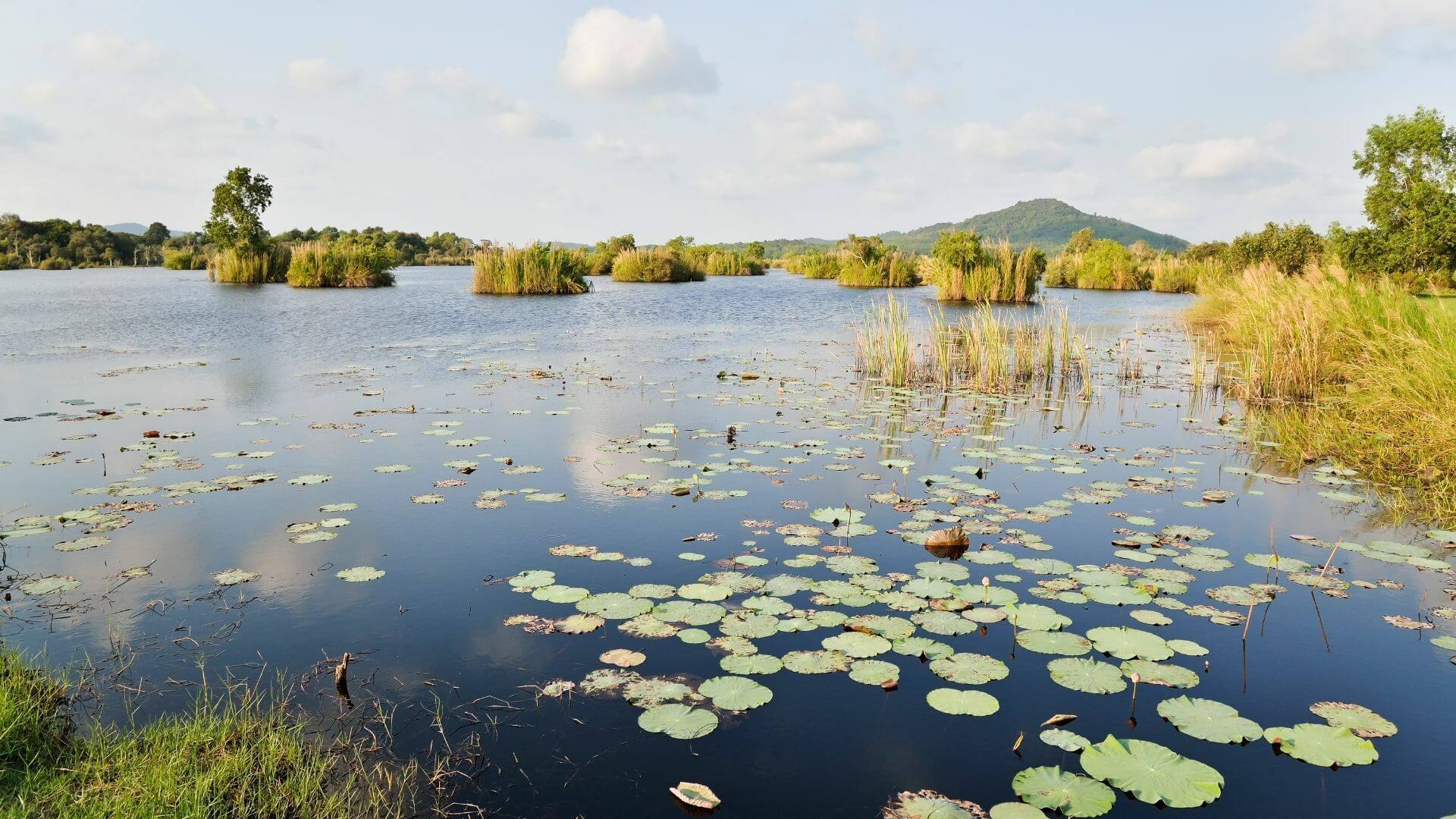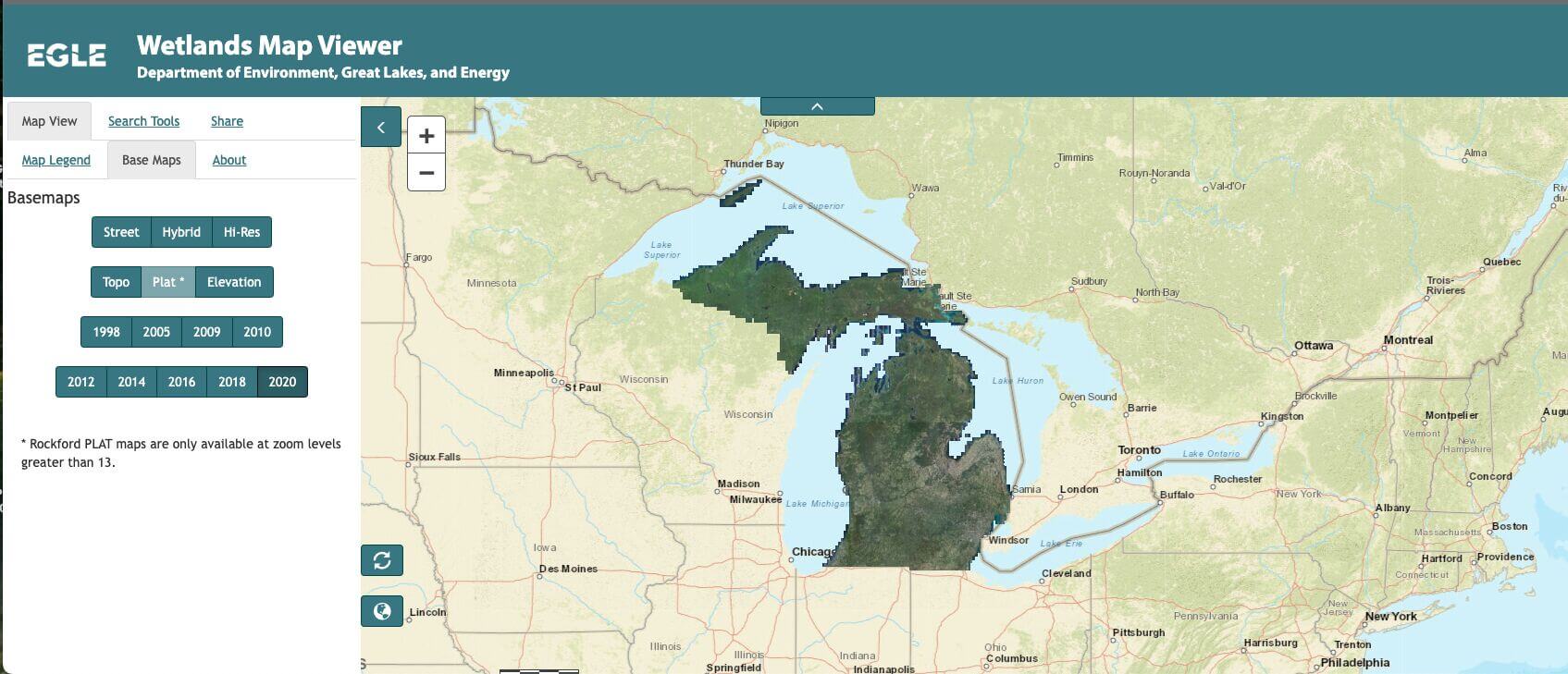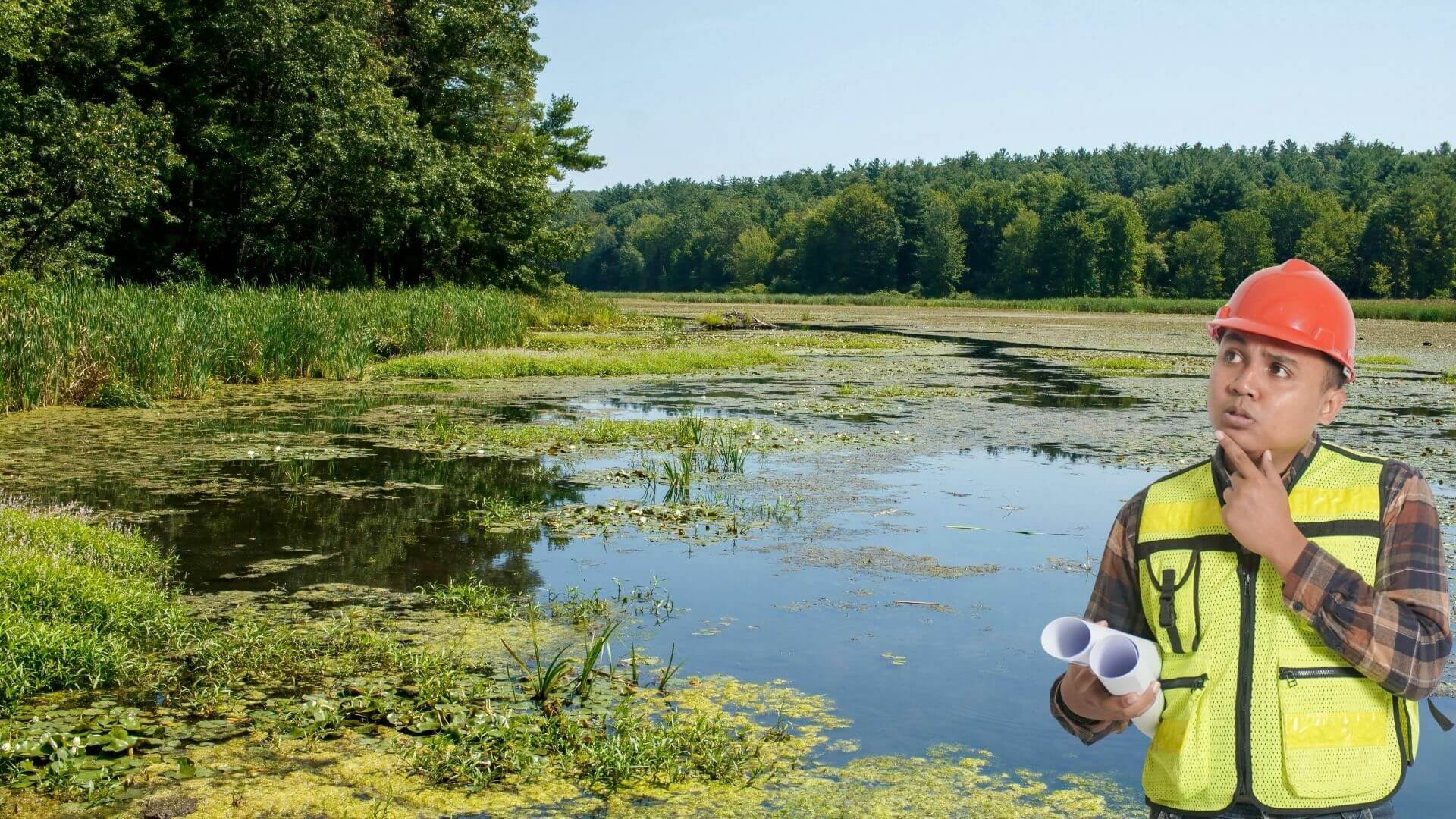If you’ve fallen for a piece of Michigan ground with cattails, a ribbon of creek, or a quiet inland lake, you’re not alone. Waterfront and wetland edges hold wildlife, privacy, and big-time beauty. But the natural features that make a parcel special can also change how—and where—you build. The good news? With a little homework and the right sequence, most buyers can find a buildable plan that respects the resource and keeps a realistic timeline.
This guide walks you through the Michigan-specific playbook: what’s regulated, quick ways to prescreen a parcel, when you’ll need permits, and how to write offers that protect your budget and your calendar.
What Counts as a “Regulated” Wetland in Michigan?
 Let’s keep it plain-English. In Michigan, a wetland is regulated when it meets certain criteria under Part 303 (Wetlands Protection) of state law. The thresholds that matter most to land buyers are:
Let’s keep it plain-English. In Michigan, a wetland is regulated when it meets certain criteria under Part 303 (Wetlands Protection) of state law. The thresholds that matter most to land buyers are:
-
Wetlands connected to the Great Lakes or Lake St. Clair, or within 1,000 feet of them
-
Wetlands connected to an inland lake/pond/river/stream, or within 500 feet of them
-
Isolated wetlands larger than 5 acres, and some smaller “essential” wetlands designated by the state
Translation: proximity and connectivity often bring your project under the permitting umbrella—even if the ground “looks dry” during part of the year.
Bottom line: “Regulated” doesn’t mean “off limits.” It means your activities in wetlands (like fill, grading, or drainage) may require a permit or a design tweak to avoid the impact.
Can You Build? Three Real-World Scenarios (and What to Do)
![]() 1) Your Home Site Is in Upland (Outside the Wetland)
1) Your Home Site Is in Upland (Outside the Wetland)
This is the most straightforward path. If you can tuck the house and septic into uplands, you often avoid wetland impact permits. The gotcha is in the details—driveway alignment, utility routes, and yard grading. A driveway that nicks a wet pocket or a culvert set wrong can turn a simple build into a regulated project.
Smart steps:
-
Flag an upland building envelope early.
-
Draft a driveway/utility path that threads the upland needle.
-
Keep septic and reserve area in suitable soils (your county health dept. will care about this).
2) You Need to Cross or Fill Wetland (Driveway, Pad, Utilities)
Activities like placing fill, dredging, draining, or constructing in wetlands typically require a permit under Part 303. Good design reduces impacts—and headaches. Think narrower driveway crossings, proper culvert sizing, and route tweaks. Showing you’ve avoided and minimized impacts is part of a successful application. Michigan State and Federal Wetland Regulations-Link
3) Waterfront Projects (Docks, Boardwalks, Shoreline Work)
Work where land meets water (inland lakes and streams) often triggers Part 301 permitting, handled through the same Joint Permit Application portal you’d use for wetlands. Some low-impact projects can qualify for General/Minor permits with faster review and lower fees.
The 15-Minute Michigan Map Stack (Pre-Screen Like a Pro)

We start every waterfront parcel with EGLE’s Wetlands Map Viewer to flag potential wetlands before site plans and offers.
Before you spend on consultants, grab these free map tools and do a quick pass:
-
EGLE Wetlands Map Viewer – A heads-up layer that shows potential wetlands and past mapping. It’s not a legal delineation, but it’s a great first filter.
-
County GIS + FEMA Flood Maps – Check parcel lines, contours, floodplains, and any locally mapped wetlands/floodways.
If the Viewer lights up your parcel with blue/green polygons or you see low-lying areas on aerials, plan on a closer look in the field.
Pro tip: If impacts look likely, ask for an EGLE pre-application meeting up front. It’s voluntary, collaborative, and can save you time and redesigns by aligning your plan with the rules before you file.
Wetland Delineation 101 (and When You Truly Need One)
A wetland delineation draws the line between wetland and upland on your site—critical for setting your house pad, driveway, and septic in the right spot. Qualified environmental consultants flag the boundary in the field, document soils/vegetation/hydrology, and provide a sketch or map.
Michigan also offers two helpful services:
-
Pre-Application meeting (Pre-App): EGLE staff can confirm whether a permit is likely needed for a proposed activity; it’s fast and useful for early planning.
-
Wetland Identification Program (WIP): This is a more formal service that can verify wetland/upland boundaries on the site—very helpful when the line is in dispute or unclear.
Order the delineation before you finalize a site plan. It’s the cheapest insurance you’ll buy on a wet parcel.
Permits, Timelines, and Fees (No Surprises)
Most wetland and inland-lake projects run through the same front door: the EGLE/USACE Joint Permit Application (JPA), submitted online. One application routes your project for state (and sometimes federal) review, preventing duplicate processes.
Typical timing (after you submit a complete application):
-
Administrative completeness review: often up to ~30 days; expect a “fix and resubmit” if something’s missing.
-
Technical review to decision: ~1 to 90 days from the completeness date, depending on complexity, public notice needs, and season.
-
General/Minor permits: Many low-impact activities have expedited review and lower fees.
If your project triggers public notice or needs design iterations, add calendar padding. If you’re trying to close and break ground before rifle season…you’ll want contingencies (we’ll get to that).
Setbacks, Septic, and “Where Do I Put the House?”
There isn’t a single statewide “wetland setback” rule in Michigan. Instead, Michigan regulates the activities in wetlands. Your township/county zoning may still add setbacks or overlay districts near water or wetlands, so check locally as well—some local units even have their own wetland ordinances. Septic and well approvals run through the local health department; keep both systems firmly in upland soils with suitable percolation.
Practical path:
-
Confirm the wetland boundary.
-
Drop the house and septic in uplands with a reserve area.
-
Align driveway and utilities to avoid/minimize wetland crossings.
Real-World Stakes: The Honor, Michigan Case
In 2024–2025, a proposed Dollar General in the Village of Honor made headlines when EGLE halted construction over alleged unpermitted work in wetlands. By March 2025, the developer agreed to restore the wetlands and abandon the store plan. The lesson is simple: don’t move dirt or place fill near wetlands until you’ve confirmed what’s regulated and what’s permitted. It’s far cheaper to plan right than to restore. READ ARTICLE!
Your Step-by-Step Buildability Plan
Use this checklist to keep momentum and avoid expensive detours:
-
Map-screen the parcel
-
EGLE Wetlands Map Viewer + county GIS/flood layers. Note low spots and connections to creeks/lakes. (10–15 minutes.)
-
-
Walk it with a land specialist
-
We’ll look for hydric indicators, cattails/reeds, dark mucks, and drainage patterns—and talk practical house/drive options.
-
-
Order a wetland delineation (if lines are fuzzy)
-
It defines the buildable envelope and informs your septic, driveway, and yard grading plan. Consider EGLE’s WIP for boundary verification.
-
-
Sketch a site plan that avoids/minimizes impacts
-
Narrow crossings, culvert sizing, keep fill out of the wet if you can.
-
-
Book an EGLE pre-application meeting if impacts are likely
-
Align on the strategy before you invest in full drawings.
-
-
Submit the Joint Permit Application (if needed)
-
Online through EGLE/USACE JPA. Build in ~1–90 days from completeness for review. General/Minor categories can be faster.
-
-
Write offers with smart contingencies
-
Make the purchase subject to wetland delineation, septic/well approvals, and (if applicable) receipt of a wetlands/Part 301 permit on terms acceptable to you.
-
FAQs (Michigan Buyer Edition)
Can I build a house if my land has wetlands?
Often, yes—if the house, septic, and drive are sited in uplands. Activities in wetlands (fill, grading, crossings) may require a permit; many low-impact designs can be approved. Michigan State and Federal Wetland Regulations-link
How long do wetland permits take?
From a complete application, the review window is commonly ~1 to 90 days, with extra time possible for public notice or complex projects.
What’s the quickest way to see if wetlands are present?
Use the EGLE Wetlands Map Viewer as a screening tool—remember, it shows potential wetlands; field delineation defines the legal boundary.
What’s the difference between a pre-app meeting and the Wetland Identification Program?
A pre-app meeting helps determine if a permit is likely and what information EGLE needs; the WIP can verify the wetland/upland boundary on-site.
Are there statewide setbacks from wetlands?
Michigan regulates work in wetlands rather than imposing a universal setback. Local governments may adopt their own wetland ordinances or water-resource setbacks—always check zoning. Michigan Local Wetland Protection
What to Include in Your Site Plan (To Speed Approval)
Think of your drawings as a conversation with reviewers. Clear plans get faster “yes” decisions:
-
Existing vs. proposed conditions (wetland boundary, house, driveway, utilities)
-
Driveway width/length, culvert specs, fill volumes, cross-sections
-
Erosion control and restoration notes (seed mix, stabilization)
-
Any inland lake/stream work shown with profiles (if applicable)
Your permit travels the Joint Permit Application lane; formatting your drawings like the state’s examples reduces back-and-forth.
Waterfront Extras (Docks, Shoreline, Erosion Control)
If your dream includes a dock for the pontoon or a low boardwalk through the marsh edge, expect Part 301 to apply alongside wetlands rules. The program recognizes many Minor/General permit categories for predictable, low-impact work—good news for timelines and fees. For bigger builds or structural shoreline changes, plan on a fuller review.
Friendly Warning From the Field
I’ve watched more build schedules slip from avoidance than from denial. Folks assume, “We’ll just shift the driveway later,” then find out that the only path to the house nicks a wet corner and now the project needs design revisions, a permit, and a seasonal construction window. The cheapest time to fix a plan is before it’s inked.
Ready to Evaluate a Specific Parcel?
Here’s how we can help (free consult):
-
Pull the map stack and walk the property with you
-
Flag likely wetland edges, upland building envelopes, and septic-friendly soils
-
Coordinate a delineation (if needed) and pre-app with EGLE
-
Draft offer contingencies tailored to wetlands, perc/septic, and timelines
Browse active Michigan land for sale by region, then hit the “Ask a Land Specialist” button on any listing to start a wetlands-aware buildability check.
 1) Your Home Site Is in Upland (Outside the Wetland)
1) Your Home Site Is in Upland (Outside the Wetland)